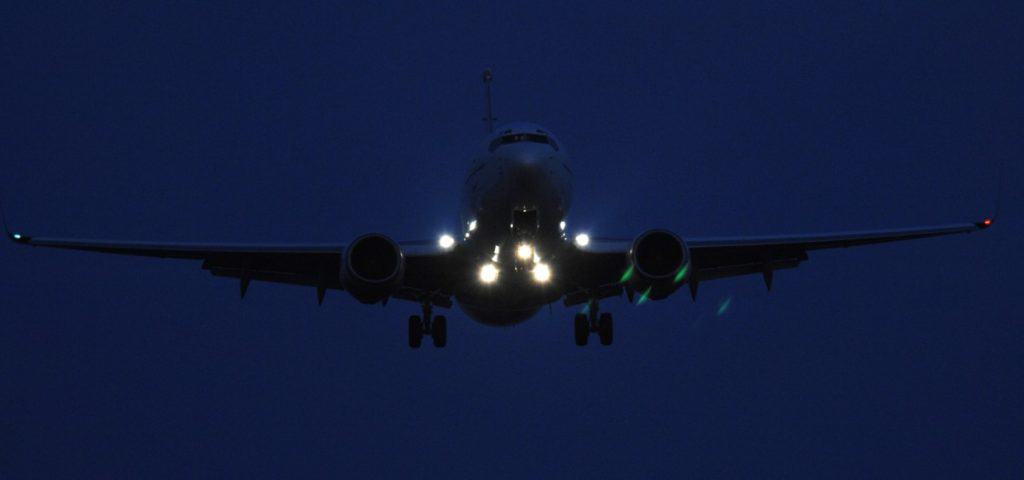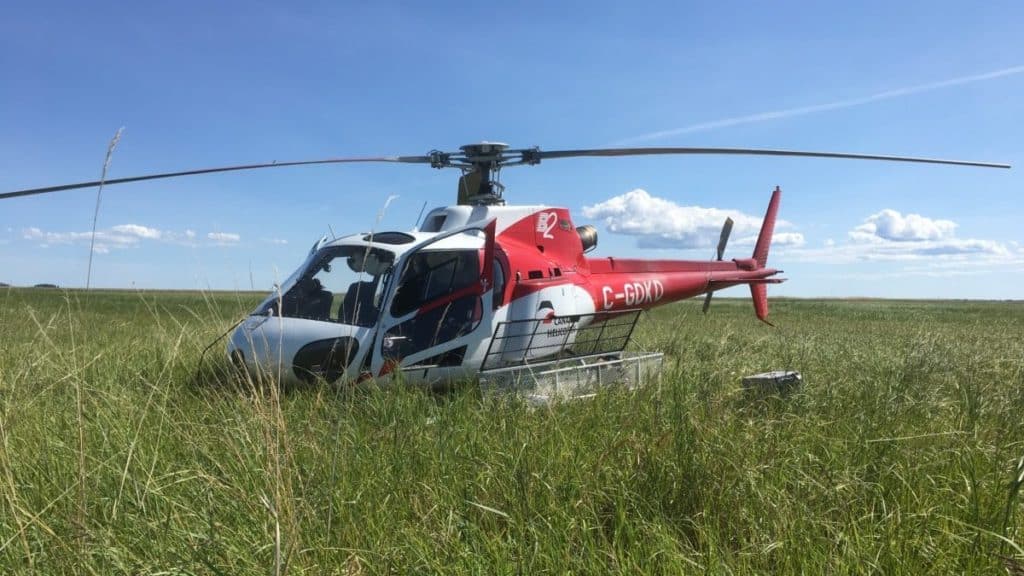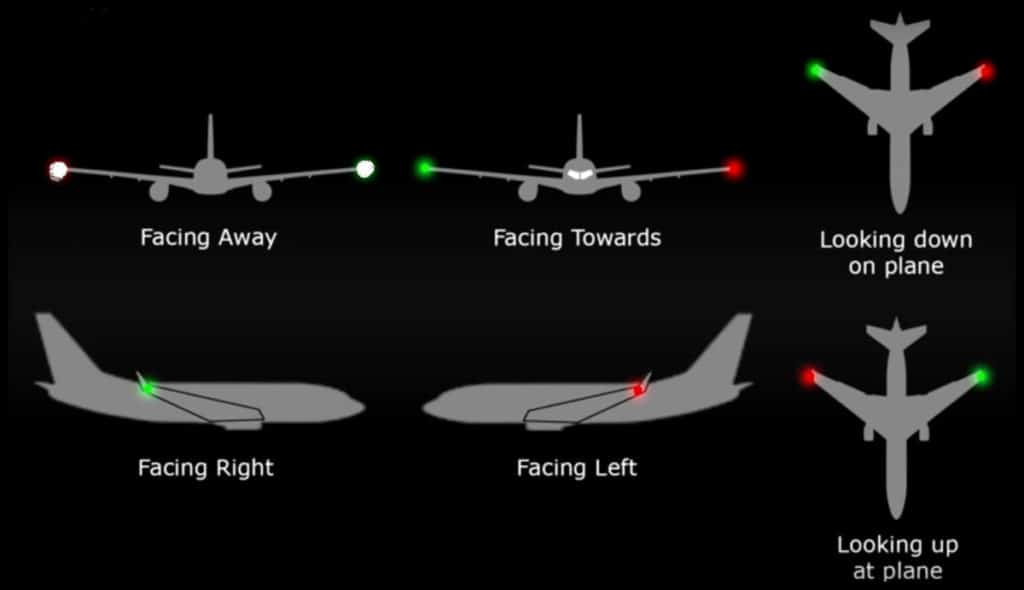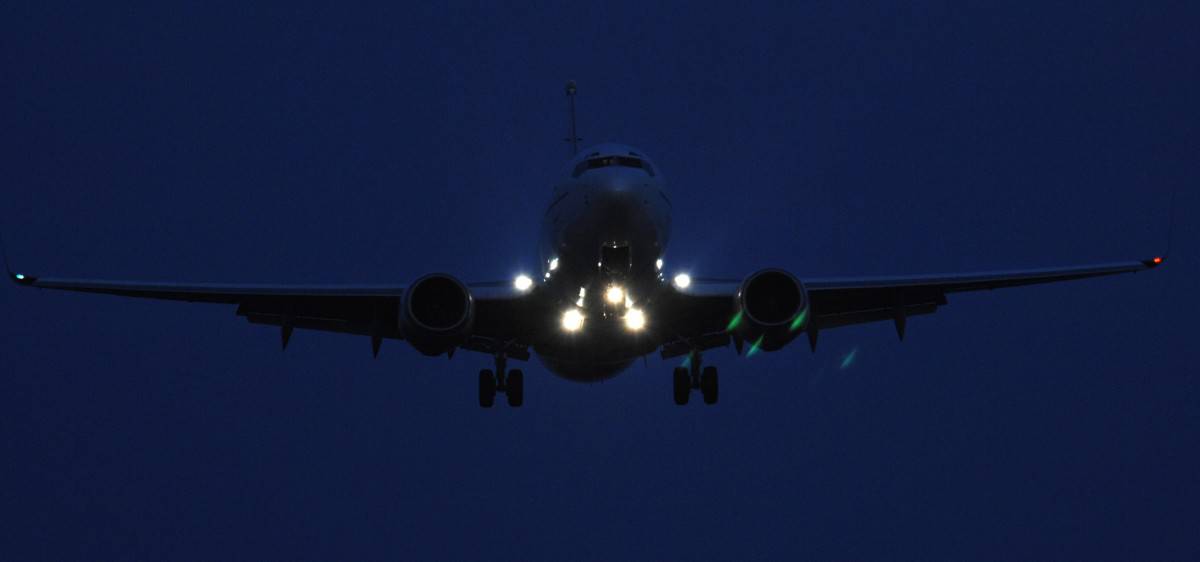
If you’ve ever taken a close look at an aircraft, you may have noticed two dominant red lights on top and under its belly. There are also a couple of other blinking lights spread out across its wings and length. What do all these flashing lights mean?
Aircraft have blinking lights to capture the attention of other pilots on other airplanes and the operators on the ground. The lights alert everyone that the plane is in the air, that its engines are running or about to start, and that they should keep a safe distance from the aircraft.
Airliners have several types of lights that help in landing, positioning, illuminating the runway, and much more. This article will explain what each of these lights is for and why they’re placed in specific parts of the plane.
What Lights are on an Aircraft?
There are many types of lights on an aircraft, and all of them fulfill one of two functions: safety and navigation.
Aircraft lights consist of:
- Strobe Lights
- Beacons
- Landing Lights
- Navigation Lights
- Taxi Lights
- Wing Illumination Lights
- Logo Illumination Lights
- Runway Turnoff Lights
With this in mind, we can divide plane lights into two groups: anti-collision lights and everything else.
Flashing or Anti-Collision Lights
Flashing lights—also known as anti-collision lights— is a set of bright, blinking lights intended to improve visibility. They can be further divided into 2 categories:
- Strobe lights – These emit intense flashes of white light to improve the aircraft’s visibility. On most planes, they’re located at the wingtips. These are great for operation in darkness or low visibility. Strobe lights are the things I look for when trying to find another aircraft, especially at night.
- Beacons – These lights flash red to alert the ground crew that the engines are about to start or are already running. Beacon lights come in pairs, one at the top and the other at the bottom of the fuselage.
I use the beacon on my helicopter to ensure I don’t walk away with my battery switch left on – Trust me, many a pilot has done it! By leaving the beacon light permanently switched on I always turn around and look at it as I’m walking away from the helicopter – It’s saved my butt a few times!

Learn More…
Try These Articles:
* This Is Why Plane Windows Are So Small!
* Vertical Tail Fins – Why Do Aircraft Have Them?
Other Types of Aircraft Lights
- Landing Lights –Sometimes, landing lights are also considered part of the anti-collision lighting system. The left and right landing lights can pulse alternately to make the aircraft more visible when landing in the darkness or with reduced visibility. Landing lights can be found at the wing root or somewhere below the wing, near the fuselage. These alternating lights are VERY effective at finding an aircraft when it’s flying.
- Logo Illumination Lights – Logo lights are steady white lights. They light up the plane’s emblem printed on the rear vertical tail. Two logo lights are usually mounted on the horizontal stabilizers facing upwards to illuminate the airliner’s logo, one on each side.
- Wing Illumination Lights – These are used on the ground to illuminate the wings to make them visible to other taxiing aircraft and ground vehicles to help prevent a collision with the wing.
- Taxi Lights – These are used to light areas ahead of the aircraft when the airplane moves on the ground/runway at night. Taxi lights are located on the landing gear strut and work the same as your car’s headlights.
- Navigation Lights – These lights are located at the wingtips and the plane’s rear end. A red light is located on the left (portside), while a green light is located on the right (starboard). There’s also a white light located at the rear of the plane. Together, these three lights help pilots of other aircraft to determine the direction of the aircraft at night depending on the lights they see.
- Runway Turnoff Lights – Runway lights are found beneath the wing roots and the fuselage. They are angled lights that are used to illuminate the taxiway an airplane is about to turn onto.

When are an Airplane’s Flashing Lights Used?
Anti-collision or flashing lights are required safety equipment for aircraft. Not only do they make an airplane visible in pitch darkness, but they also warn the ground controllers and other staff of the plane’s presence and status.
Flashing lights on aircraft are used when the engine/s are about to be started and when the aircraft is in flight. Beacon lights indicate that the engines are running, while bright white strobe lights flash to aid in being visually detected by other pilots and air traffic control.
When large airliners are given the all-clear from airport ground control to start engines the pilots will first turn on the beacon to allow all ground personnel to become aware they are about to start an engine. For smaller aircraft and helicopters, the same is true, but usually at small airports, no permission is required to start their engine/s.

Join My Newsletter & Get Great Tips, Information and Experiences To Help You Become a Superb Pilot!
Strobe lights on aircraft are turned on when the aircraft is about to take off and are turned off after it has landed and before it begins to taxi. The bright white strobe lights can hurt the ground personnel’s eyes hence why they are only used during flight.
How Many Flashing Lights Are on Each Aircraft?
The number of flashing lights on an aircraft is determined by the size of the aircraft. Larger planes have more flashing lights than smaller planes.
There is at least one set of flashing lights on every aircraft. On larger airplanes, the strobe lights consist of three white flashing lights. One on each wingtip and one at the rear. Red Beacons are located on the top and sometimes an additional beacon is on the belly, depending on the aircraft’s size.
The FAA dictates what lights an aircraft must have installed depending on when it’s flying. For flight during the day, Federal Aviation Regulation 91.205(b)(11) states there must be at least one red or white anti-collision light must be installed.
If flying at night, according to 91.205(C)(2,3,4) there must also be navigation lights installed and if the aircraft is being operated for hire, must also have an electric landing light installed
Why Do Aircraft have Flashing & Constant Lights?
Flashing aircraft lights are designed to make the aircraft easily identifiable by other pilots. Peripheral vision detects flashing very easily. Constant lights are designed to help determine the aircraft’s direction and position depending on which lights can be seen by the other pilots.
Blinking or flashing lights have the following features:
- Blink at regular intervals.
- More powerful than constant lights.
- Designed to attract attention, increase visibility, and avoid collisions.
- Travel longer distances.
Meanwhile, constant lights:
- Always stay on during the day and night.
- Show the position and orientation of the aircraft.
Learn More…
Try These Articles:
* Why are Unpainted Aircraft Green or Yellow?
* Airplane Touch & Go’s – Why Do Pilot’s Do Them?
Final Thoughts
Aircraft have blinking lights to make air travel safer. Besides giving away the aircraft’s position, blinking lights also help ward off weather-related accidents. They’re strong enough to pierce through the mist, fog, and thick clouds.
Airplanes also have a variety of lights that aid in navigation, both in the air and on the runway.


